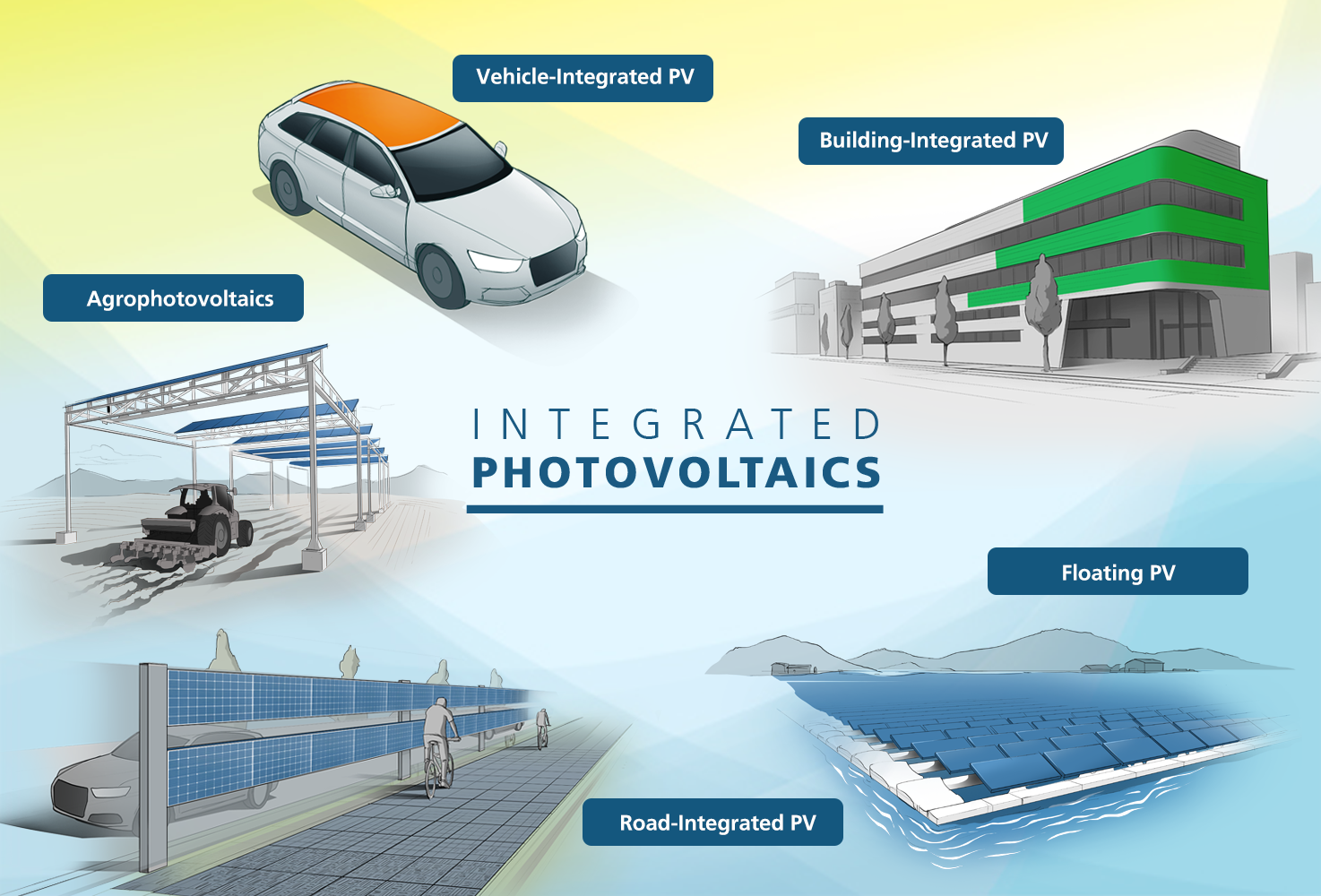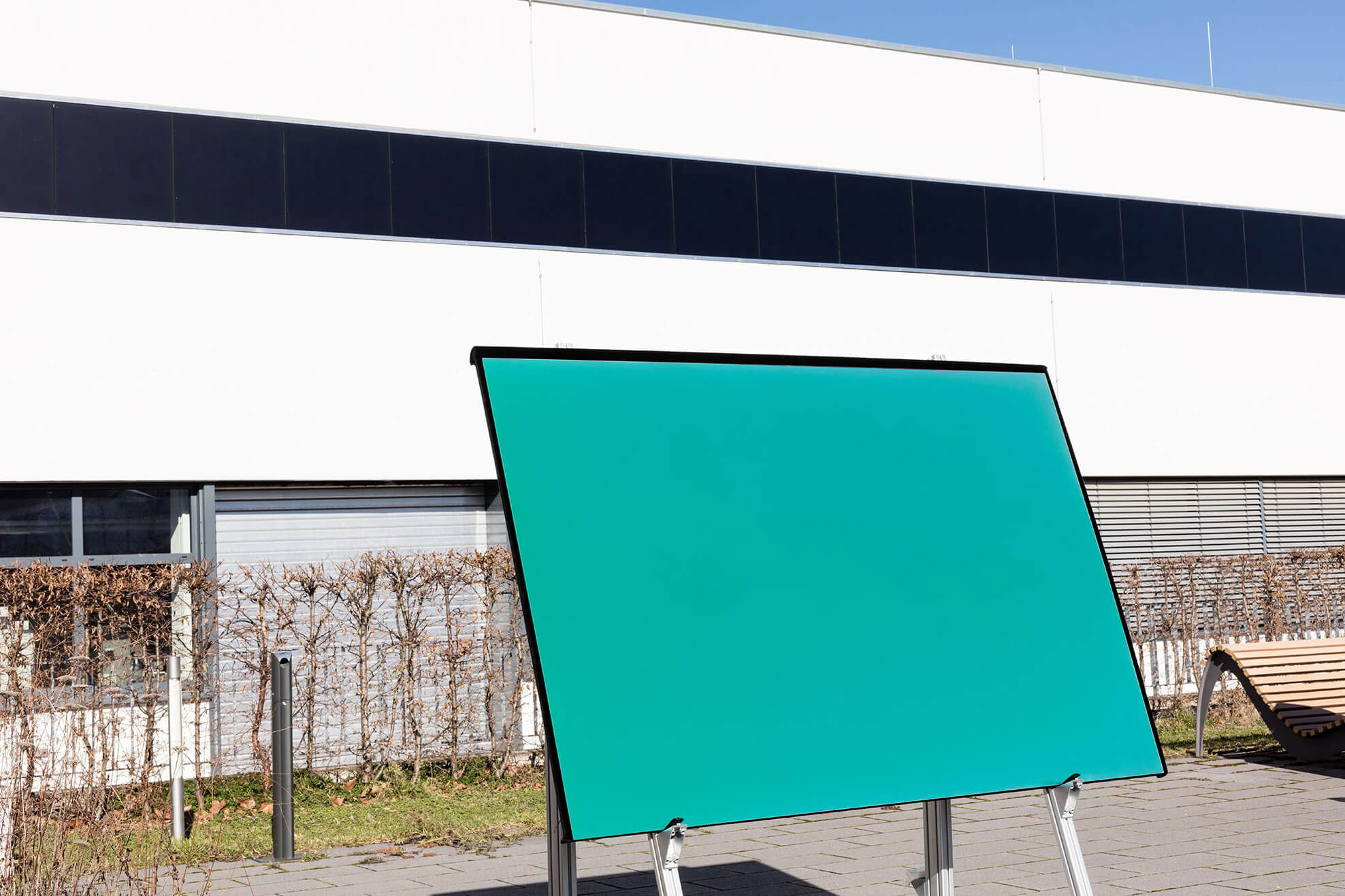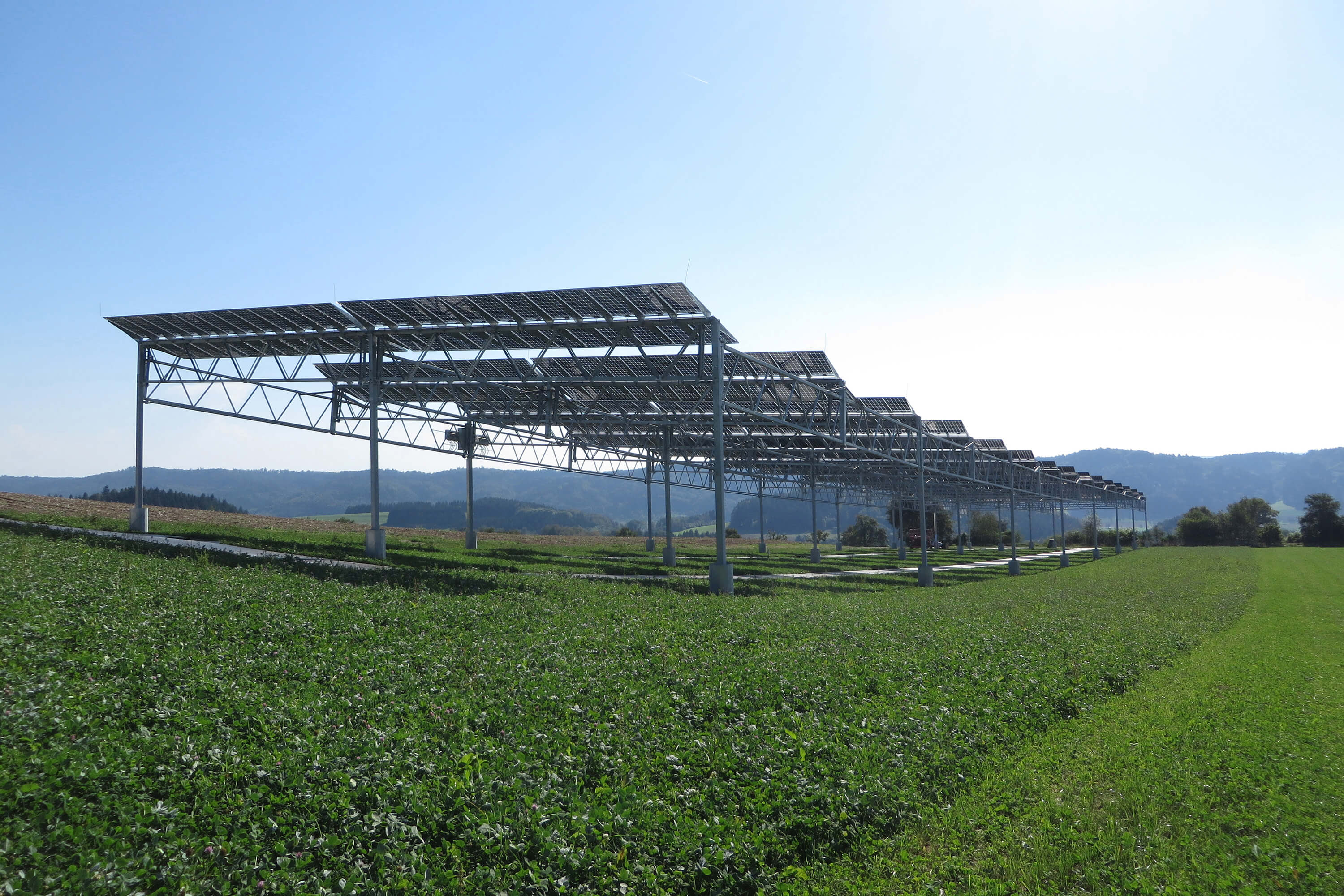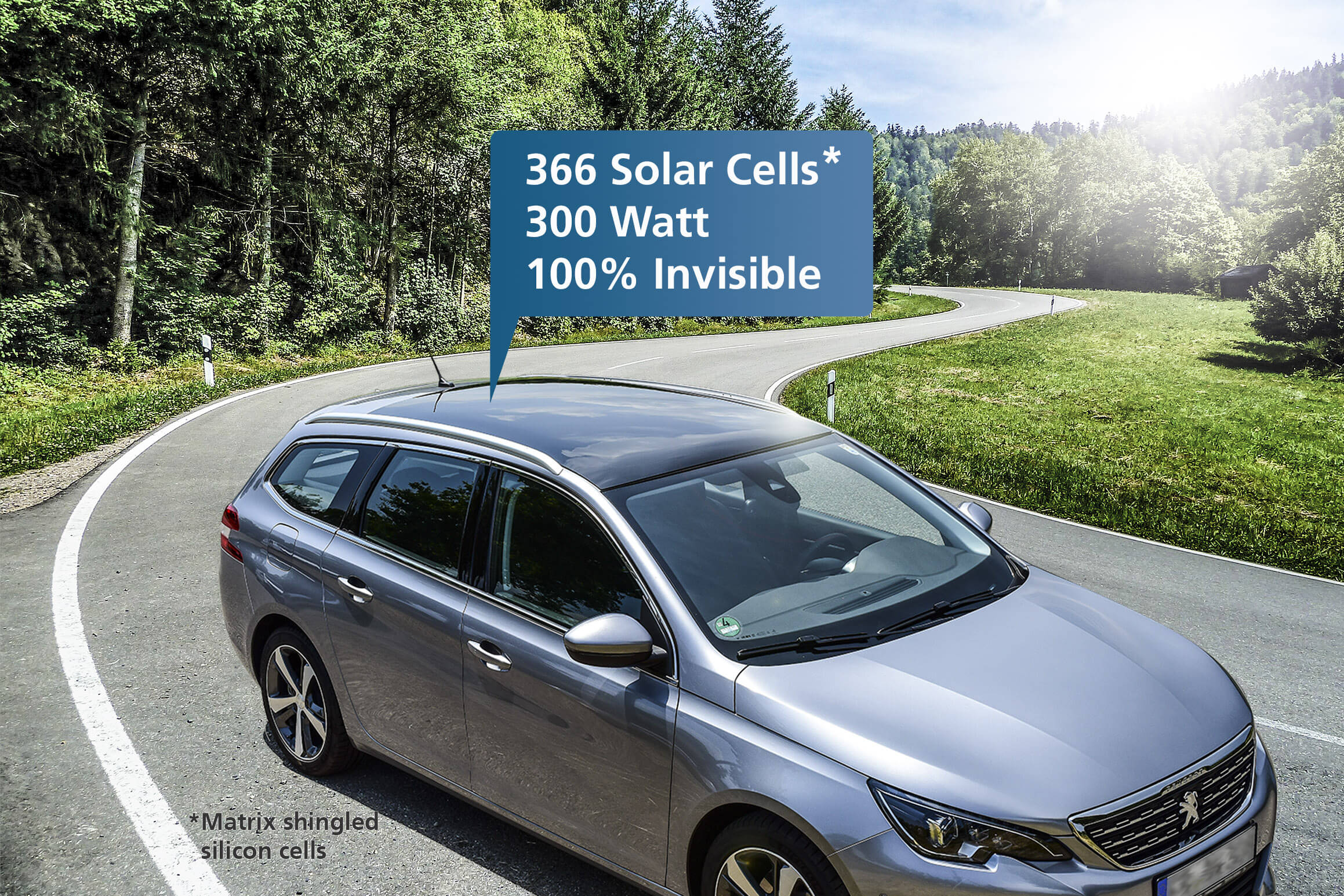Fraunhofer ISE
Utilizing Surfaces: Fraunhofer ISE to Present Integrated Photovoltaic Solutions at the EU PVSEC
Meeting Germany’s climate protection targets will require a significant expansion of photovoltaics. Depending on the scenario, up to 500 gigawatts of installed PV power output could be needed by 2050. To avoid land-use conflicts and public resistance to this massive expansion, minimizing the additional space occupied by solar modules and seeking out potential synergies is crucial. From September 9 to 13, the Fraunhofer Institute for Solar Energy Systems ISE will be at the EU PVSEC in Marseille (booth F 5) to introduce ideas and technologies for the successful integration of photovoltaics into the built environment.

Integrating PV technology into building envelopes, vehicles and roads, as well as over agricultural fields and floating on water surfaces, capitalizes on surface areas with a tremendous potential for generating solar power. In Germany, building-integrated solar technologies and agrophotovoltaics alone offer a combined technical potential of several hundred gigawatts of power. Integrated PV also creates synergies with other aspects, for instance by increasing the range of electric vehicles or improving noise protection on roads and railways. Generating solar power close to the consumer or directly onboard vehicles also reduces reliance on the power grid. “We see integrated photovoltaics as an opportunity for the German and European photovoltaics industry as well as for the trades, since it requires strongly individualized solutions and must be closely intertwined with upstream construction processes,” explains Dr. Andreas Bett, Institute Director of Fraunhofer ISE.
Fraunhofer ISE has developed technologies for integrating PV modules which make it possible to freely select module formats and colors while also fulfilling special requirements such as a lighter weight, improved aesthetics or extreme mechanical resilience. Fraunhofer ISE’s solutions cover a range of application areas.
Building-integrated photovoltaics (BIPV)
In building-integrated photovoltaics, construction elements not only generate power but also provide thermal insulation and protection from wind, noise and weather while adding new design options. As a result, BIPV makes a significant contribution to reducing building-related CO2 emissions. Fraunhofer ISE has developed flexible formats and high-efficiency solar cells with filigree metallization and color variations which offer aesthetic options for solar modules integrated into building façades or roofs. At the EU PVSEC, Fraunhofer ISE will be exhibiting a number of MorphoColor® modules. Thanks to their special coating on the glass cover, these modules can be manufactured in any spectral color with high saturation and angular stability, and the relative efficiency value is lowered by only seven percent.
Agrophotovoltaics (APV)
Agrophotovoltaics involves the installation of solar modules over arable land, enabling an expansion of PV power output while simultaneously using the land for agricultural purposes. As part of a research project near Lake Constance in Germany, Fraunhofer ISE was able to demonstrate a 60–84% increase in land-use efficiency as well as improved agricultural resilience during dry periods. Additional benefits include protection against damage caused by hail, drought and frost, a reduced need for irrigation and the option to use solar power directly on site.
Vehicle-integrated photovoltaics (VIPV)
In vehicle-integrated photovoltaics, solar modules replace parts of the vehicle shell and supply power to electrical components or feed energy into the drive batteries of electric vehicles, thereby increasing the distance they can drive on a single charge. Aesthetic standards and module efficiency are especially important factors when integrating solar modules into vehicles. Fraunhofer ISE has developed a spherically curved solar car roof with high-efficiency solar cells that boast an output of about 210 W/m2. Overlapping connections in a shingle system allow for optimal use of the module area for generating power while maintaining a homogeneous and attractive overall appearance. Lower resistance losses and the elimination of shading via cell connectors in conjunction with a particularly high shading tolerance improves absolute module efficiency by as much as two percent compared to conventional solar modules. Fraunhofer ISE is also exploring glass-free structures for lightweight construction applications in commercial vehicles.
Road-integrated PV (RIPV)
Road-integrated photovoltaics involves embedding solar modules in, on and above transportation routes. Applications range from direct integration into streets, sidewalks and public squares to use in railroads and other traffic-related surfaces such as noise protection walls and shoulder lanes. Given that roughly 5% of Germany’s total surface area is covered by transportation routes, making use of already sealed horizontal surfaces opens up enormous technological potential.
Solar modules that are integrated into roadways must offer a sufficient degree of traction for all road users, regardless of the weather conditions, requiring the development of durable, structured module surfaces.
Floating PV (FPV)
Floating PV systems, with modules mounted on buoyant bodies that float on standing water or the ocean’s surface, have experienced dynamic growth worldwide (over 1.1 GW of installed capacity as of mid-2018). Germany has a huge opportunity to capitalize on this technology in pit lakes, flooded gravel pits and, in some cases, reservoirs. The advantages offered by FPV lie in its inexpensive large-scale implementation, the increase in PV efficiency thanks to the water’s cooling effects and lower rates of evaporation which help to limit water loss.
R&D and other services offered by Fraunhofer ISE for integrated PV
- High-efficiency PV technologies
- Application-optimized cell and module designs
- MorphoColor® coatings
- Sample preparation in full format on industrial equipment
- Module characterization and testing in accredited laboratories
- Preparation of module certification
- Yield simulation and monitoring
- Production lines and digital processes
- Power electronics and system integration
- Potential, cost and economic feasibility studies
- Life cycle analysis (LCA)
Presentation on BIPV:
Thursday, September 12, 2019, at the 3.15–4.45 pm session on PV for buildings: “Methodology and Tool for the Electrical Layout of BIPV-Modules with Novel Design Features,” J. Eisenlohr, S. Gasparotto, A. Mondon, M. Heinrich & T.E. Kuhn
Parallel event on BIPV:
Thursday, September 12, 2019, 8.30 – 12. 30
IEA PVPS Task 15 and ETIP PV: "BIPV - Moving into the Next Phase", including following presentations involving Fraunhofer ISE:
9:20 Regulatory aspects of BIPV
Helen Rose Wilson, Fraunhofer ISE / Francesco Frontini, SUPSI / Nuria Martin, CIEMAT
11:45 IEA PVPS Task 15 phase 2 – the next step in international collaboration
Johannes Eisenlohr, Fraunhofer ISE


